Decode food labels: 3 easy tips to outsmart sneaky marketing
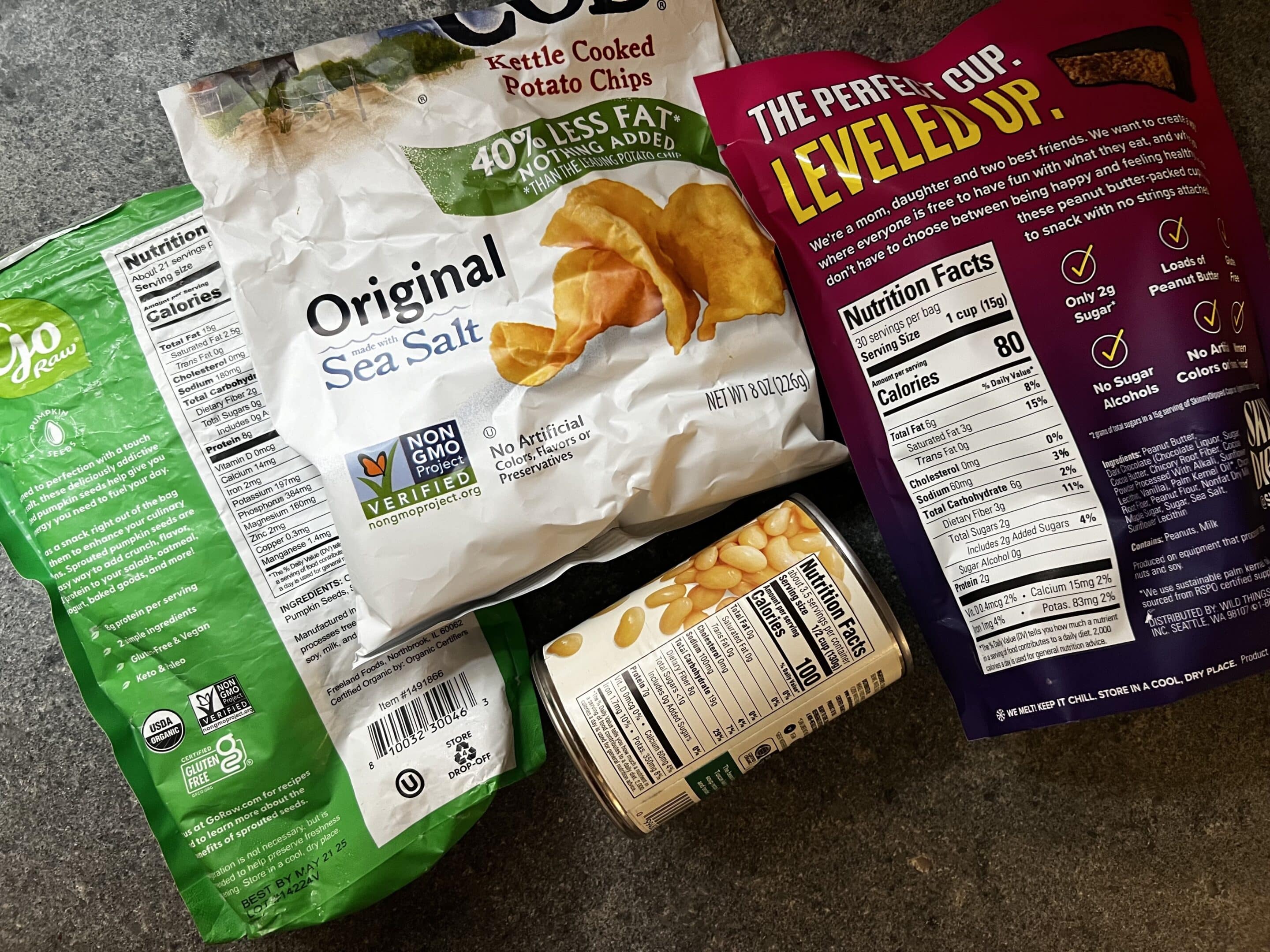
Nutrition labels are confusing and food manufacturers are really good at tricking us by making packaging look “healthy” with buzzwords and design. Being able to quickly scan a nutrition label and know what to look for will help you make healthier choices at the grocery store. While those labels have a ton of info on […]
Nutrition labels are confusing and food manufacturers are really good at tricking us by making packaging look “healthy” with buzzwords and design.
Being able to quickly scan a nutrition label and know what to look for will help you make healthier choices at the grocery store.
While those labels have a ton of info on them, below are just three easy tips to help you quickly decide whether you want to buy any packaged item.
1. Look at the serving size, then the nutrition info.
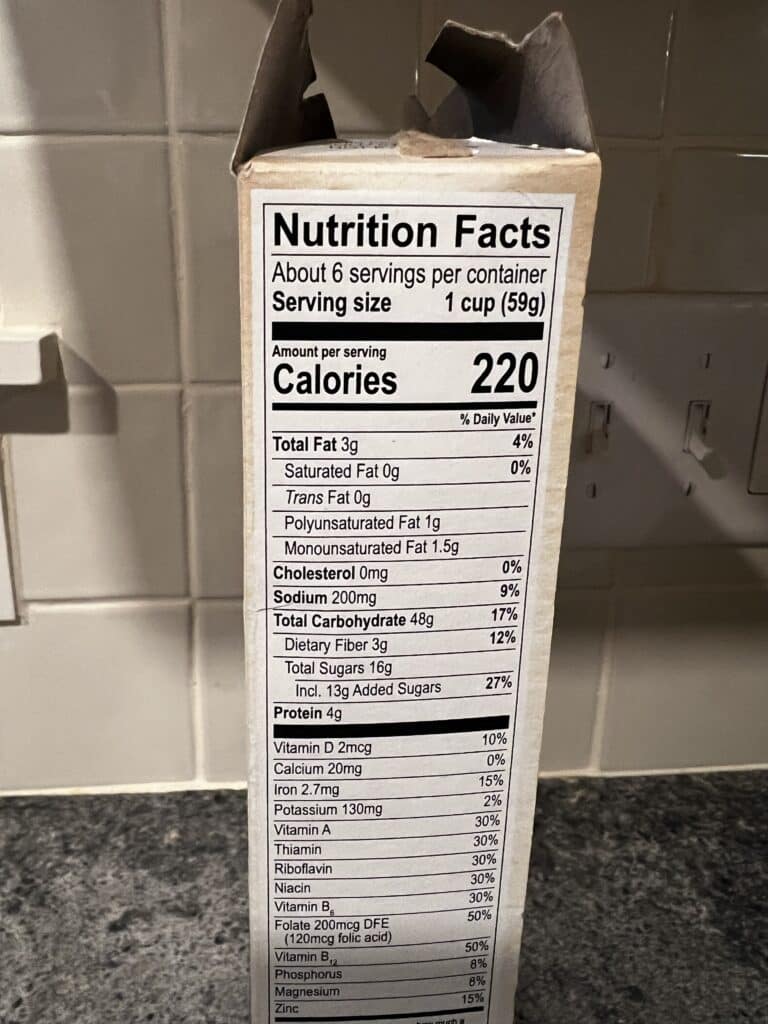

The serving size is the first thing listed on a nutrition label and it’s not necessarily a recommendation of how much to eat or drink. This is where it’s easy to get tricked by food labels!
The nutrition facts (calories, carbs, etc…) under the serving size tell you the amount in that one serving size, not in the whole package. Often food manufacturers will list a serving size that is unrealistically low for what you would actually eat in one sitting.
For example, one serving is often half of a canned beverage, a quarter of a candy bar, or half of a bag of chips.
So, if a small bag of chips has a serving size of “10 chips” (ha, yeah right!) and there at 3 servings per container, you’re getting 3x the amount of calories, sugar, fat, etc…that is listed on the label.
Cereal or granola are common items that can be deceiving because the serving size is often much smaller than what you will realistically eat. If the nutrition label on a box of cereal says it has 5g of sugar, but the serving size is ¼ cup, then you’re likely going to be eating a lot more than 5g of sugar – most people are eating at least 1 cup of cereal in one sitting.
This is why you should first look at the serving size – it helps you determine how much of each nutrient you’ll eat based on your realistic serving size.
Once you’ve determined the serving size and how many servings there are in the package, you can then scan the nutrition label and look at:
- Total sugars – as a general rule, keep it 5g or less.
- Protein – since we need a lot of protein everyday (at least 120g), it’s good to buy products that are high in protein or at least contain a small amount.
- Fiber – we want to eat plenty of fiber (at least 30g/day), so buying foods that have anywhere between 3-10g fiber per serving is a good start.
- Trans fats – we don’t want any artificial trans fats, so if you see that on the label, avoid it!
There is a lot of other info on that label, but those are what I always prioritize and look for.
2. Scan the ingredient list
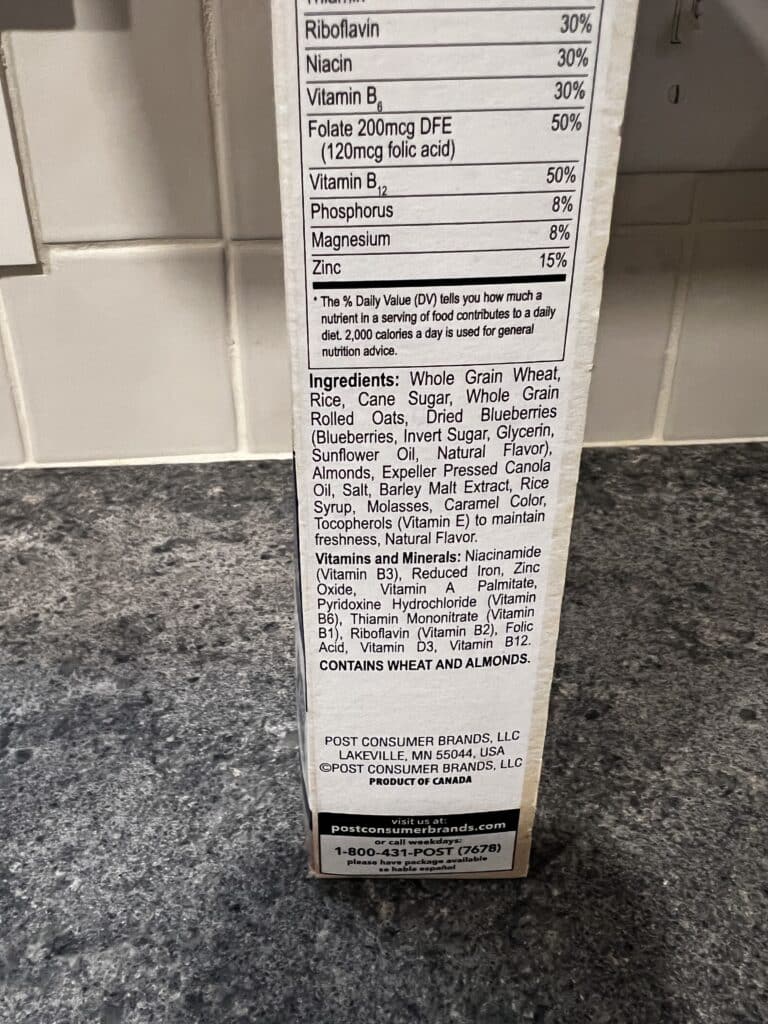
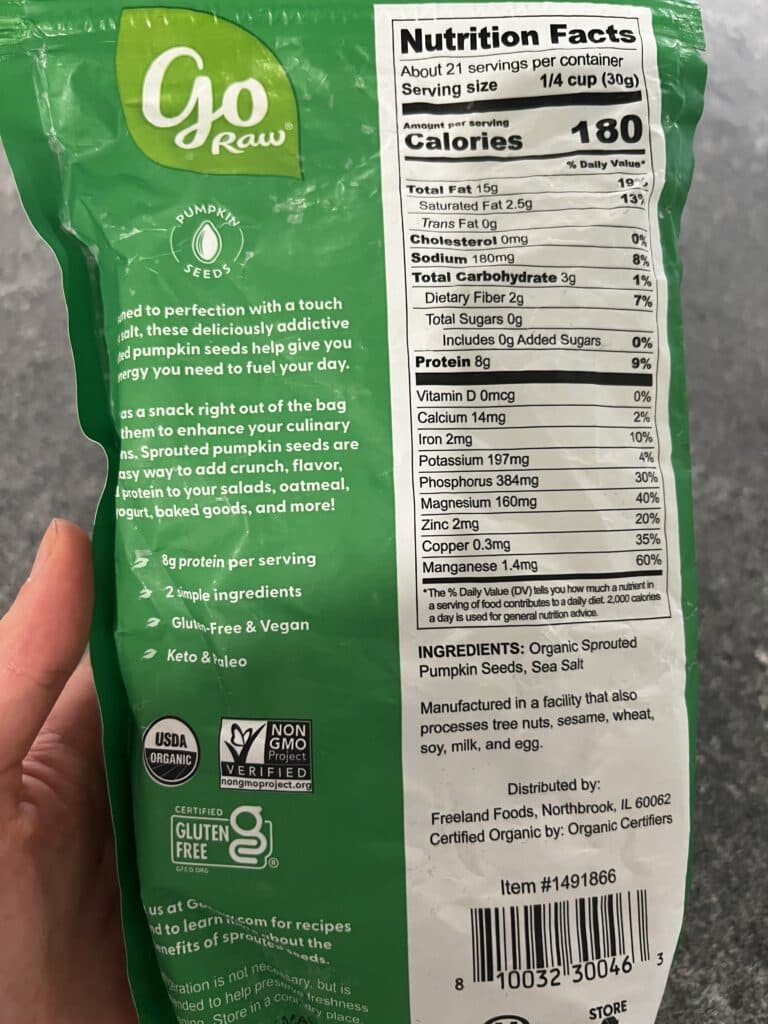
The second most important thing to do is read the ingredient list!
Ingredients are listed by quantity/weight from the highest to lowest amount. So, the first ingredient is what the food manufacturer used the most.
The first 3 ingredients make up the biggest part of what you’ll be putting into your body.
So, if the first three ingredients are any type of sugar, refined grain, or hydrogenated oil or partially hydrogenated oil (artificial trans fats), that’s a red flag.
Food manufacturers get really creative with disguising names of ingredients to more delicate or complex words to try and trick consumers.
For example, sugar comes in many forms and is not always just listed as “sugar”.
Also, it’s better to have a short ingredient list with fewer than three lines (top right photo). Products with a long list of ingredients (top left photo ) are generally highly processed.
3. Don’t be fooled by buzzwords on the front of the packaging

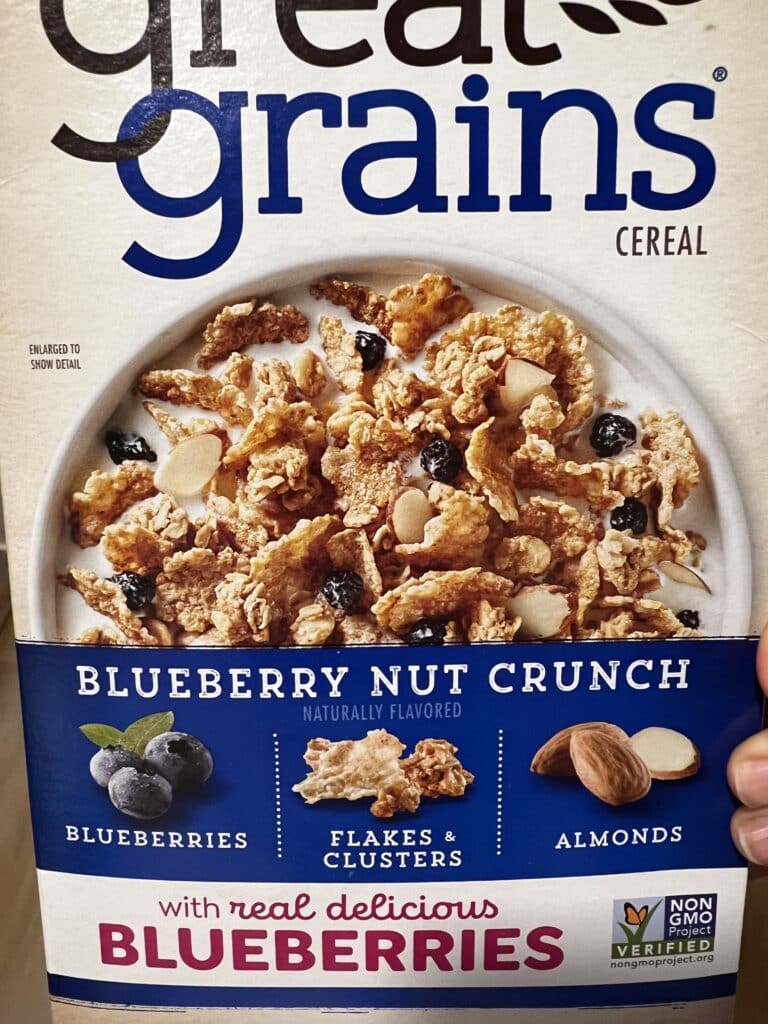
Companies like to trick consumers into thinking something is “healthy” by using unregulated buzzwords. This is how food companies sneakily lure you into buying their products, and studies show that it works.
Don’t fall into this trap! Just because the box is made from recycled cardboard, has a pretty design, and says “all natural” doesn’t mean it’s a healthy choice or tell you anything about what’s inside.
Common buzzwords include (but are certainly not limited to):
- Reduced fat
- Low sodium
- Natural
- Natural flavors
- Low calorie
- Light
- No added sugar
- Made with whole grains
- Made with real fruit
Instead of falling into this marketing scheme, check out the nutrition label and ingredient list!
Understanding the carbohydrates on the label
This part of the nutrition label is a little confusing, so I just wanted to break it down so you understand it.
On the label you’ll see “total carbohydrates”, and underneath it “dietary fiber”, “total sugars”, and “added sugars”. This is because fiber and sugar are types of carbohydrates.
Related: why fiber is so important and how to eat enough of it
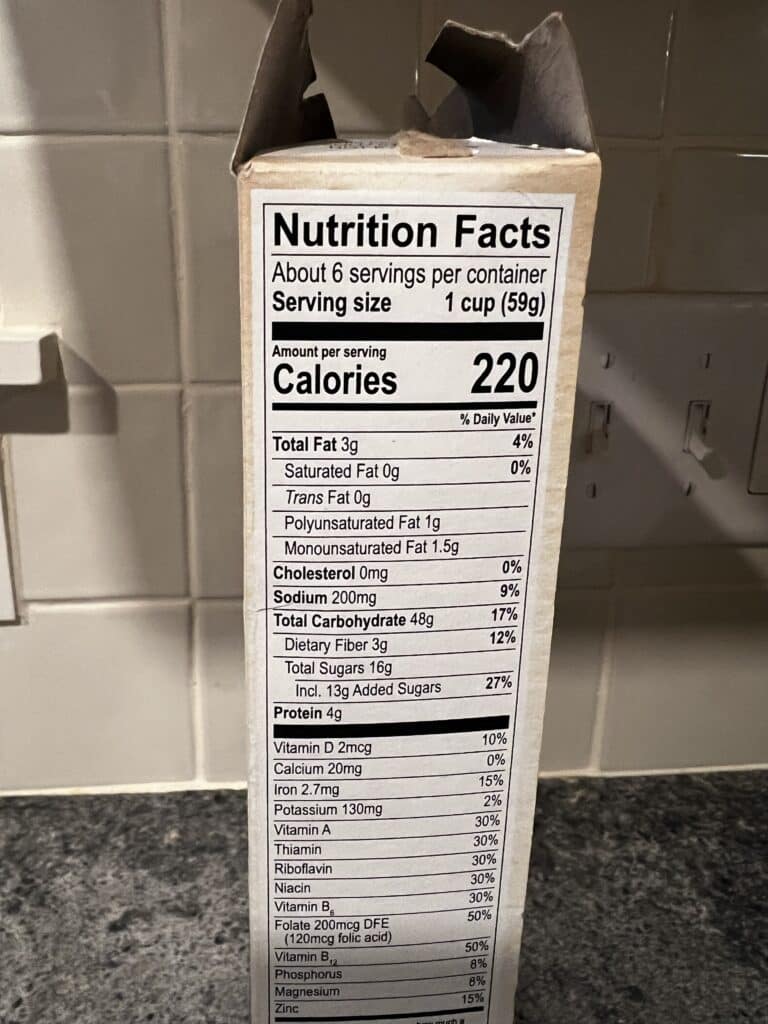
So this label says 48g total carbohydrates, 3g fiber, 16g sugar, and 13g added sugars.
That means of those 48g carbs, 3g come from fiber, 16g from sugar, and 13g of that sugar is added sugar.
Ideally, there you want less sugar and more fiber.
Other easy nutrition label hacks
Don’t get too crazy with these, but if you’re looking at a product or comparing it to a similar product to see which is more nutrient-dense, you can use these little tips to figure it out.
1. Fiber + protein should be more than the total amount of sugar. This helps you choose items that won’t make your blood sugar spike, since fiber and protein reduce the rate that sugar gets absorbed into your bloodstream.
It’s not a hard and fast rule, just a tool that can be helpful.

This cereal has 16g sugar and 4g protein + 3g fiber = 7g. This doesn’t pass the test!
2. As a general rule, it’s good to stay under 5g of sugar per your realistic serving size.
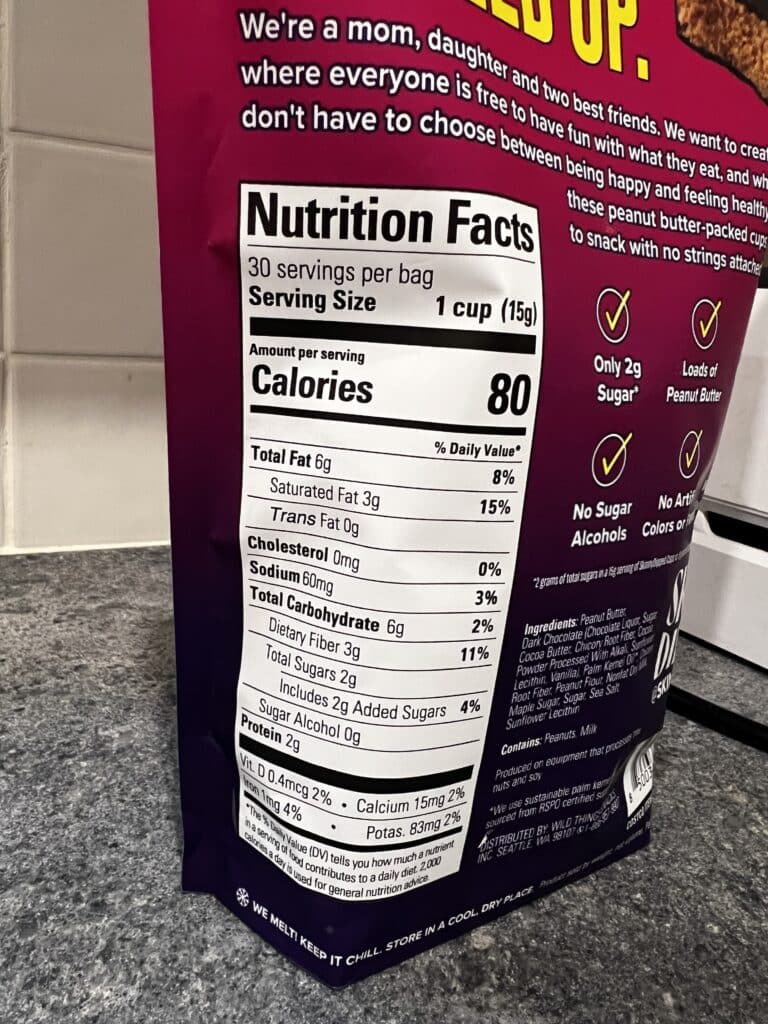
My favorite PB cups! These have 2g sugar and 2g protein + 3g fiber = 5g. This passes that test.
It also passes my sugar test – I usually eat two of these for my lunch dessert, so that puts me at 4g sugar.
Plus it has a good amount of fiber and protein for such a small thing.
To summarize!
Nutrition labels are confusing! So to recap, these are the three things you can quickly do before deciding whether you want to buy a product:
- First, check the serving size, then scan the nutrition label to see how much you’ll be getting in the serving size you typically eat. My eyes usually go to the sugar and protein first.
- Then I’ll scan the ingredient list – check the first three ingredients (these make up the majority of the food). Look out for sugars, refined grains, or hydrogenated oil/partially hydrogenated oil (artificial trans fats) in those first three ingredients. A shorter list with words you recognize is generally better!
- Ignore health claims and buzzwords on the front of the package! Scan the nutrition label and ingredient list instead.
Of course we all buy packaged treats like ice cream, chocolate, or chips that will have a nutrition label that does not scream “a healthy choice”, but as long as most of what you’re buying is minimally processed and/or passes your nutrition label scan, then don’t stress about it!
Comment below if you have any questions!


What is the name of the peanut butter cup snack? Looks so yummy and healthy!
They’re the skinny dipped dark chocolate peanut butter cups. They sell those big bags at Costco. They’re sooo good!!